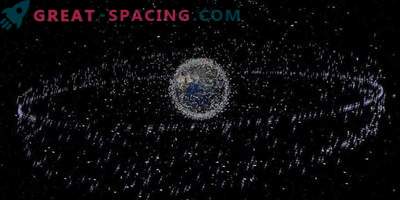
As of January 2019, more than 128 million fragments with a size of less than 1 cm rotate in orbit around the Earth, 900,000 pieces - 1-10 cm and somewhere 34000 parts exceeding 10 cm. What to do with all this a mountain of dangerous space junk?
Clear Orbit
Scientists realized the problem of accumulating artificial fragments in orbit back in the 20th century, when passions over the space race subsided. Therefore, various commissions and methods for tracking the movement of fragments began to be created in order to calculate the number and indicate their distribution in space.
Modern methods of dealing with garbage are only at the stage of development and testing. At critical moments, it will only turn out to warn about the danger and try to displace the satellite or the orbital station in time to protect the mechanisms and crew members from collisions.
Recent Initiative

RemoveDEBRIS Satellite
The successful project in 2019 was the satellite RemoveDEBRIS. The first tests began in 2018, and on February 8, 2019, the device was put into near-earth orbit, where he managed to catch an artificial piece with a harpoon. The mechanism shoots at a speed of 20 m / s, and can hunt debris with a maximum size of 10x10 cm.
Despite the success, the project has already managed to criticize. The fact is that harpoon technology is rather slow. In addition, it will not be able to get rid of larger or smaller parts, and when the harpoon is struck on the surface of the material, there is a risk of crushing (an increase in the number of trash fragments).
Russian project

In this regard, it seems quite unusual for the Russian satellite, the idea of which was announced recently. This is a fairly multifunctional mechanism. It represents a network of a dome and a cone, located at an altitude of 700 km from the earth's surface.
As soon as a failed satellite or a falling fragment is trapped, the device turns on the “crusher”, shreds the parts almost to a state of dust, and then mixes it with hydrogen and oxygen to produce fuel. It turns out that each absorption and “crushing” replenishes the fuel tanks of the scavenger satellite, which can move to the next target.
This is a really interesting and profitable idea, since the satellite becomes autonomous and leaves no traces in orbit. Additional energy will come from solar panels.
Postscript
The only concern is that the idea itself is still at the stage of obtaining a patent. 7.5 billion rubles will be required for its implementation. Let's see if the developers can find sponsors and create an innovative Russian satellite for cleaning garbage.











































